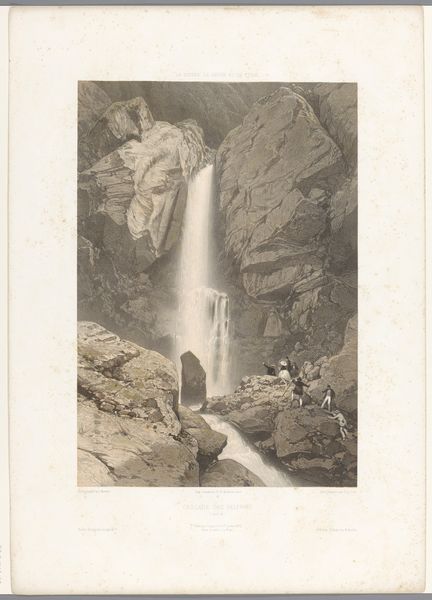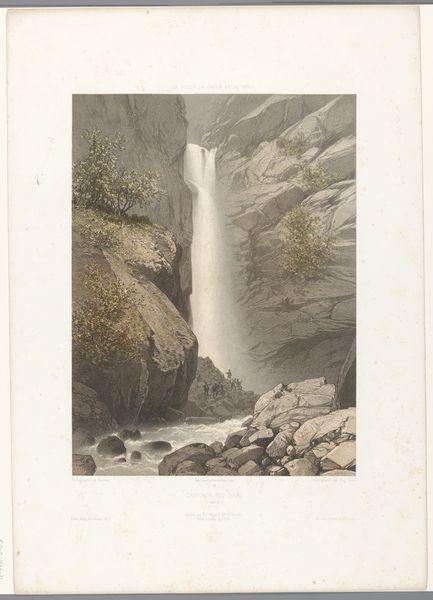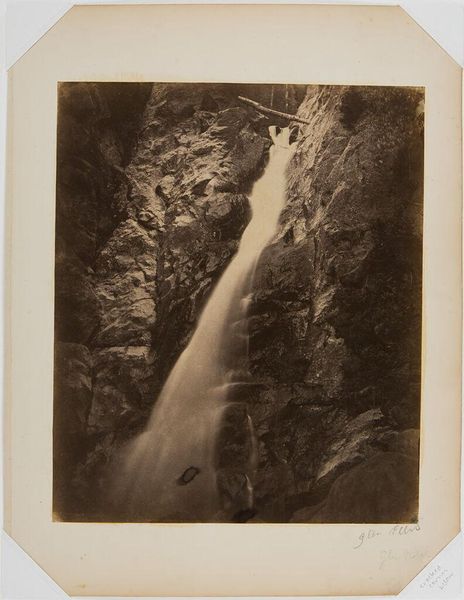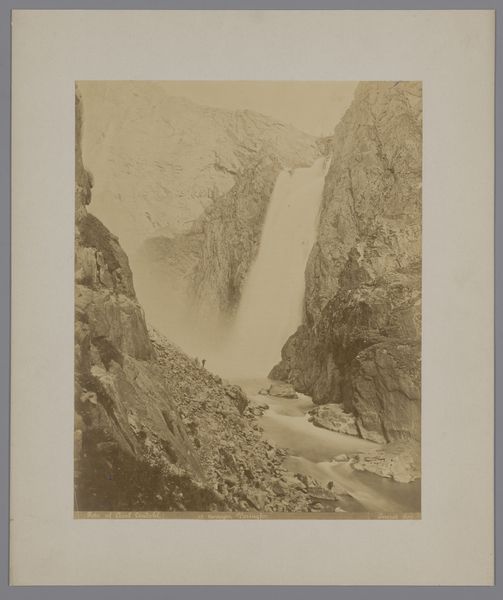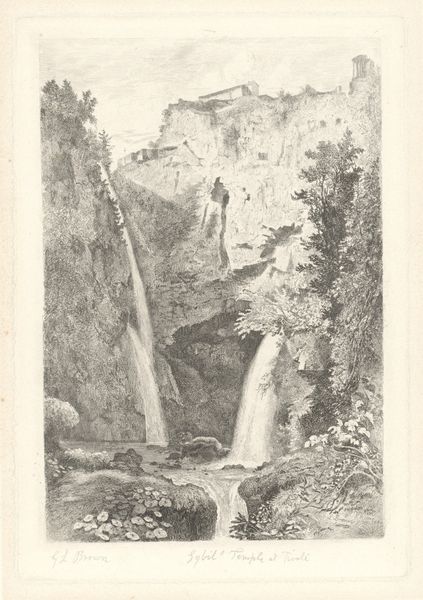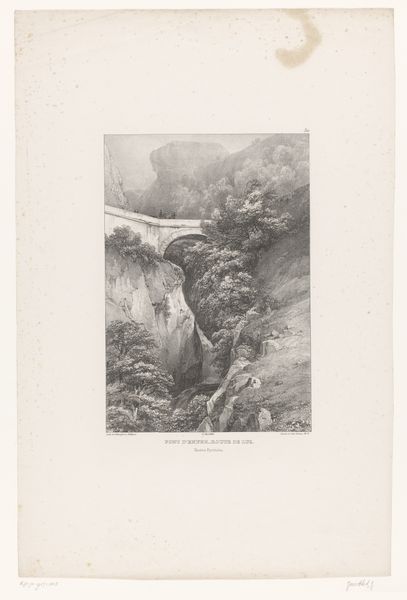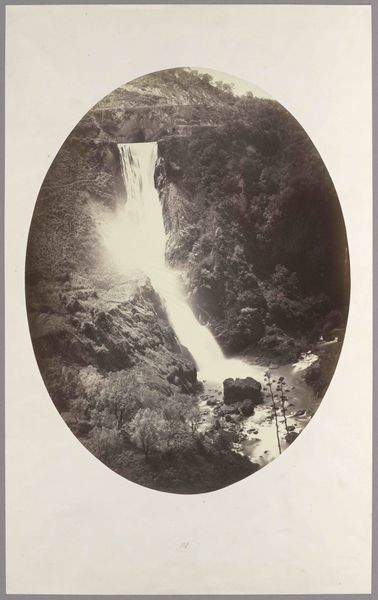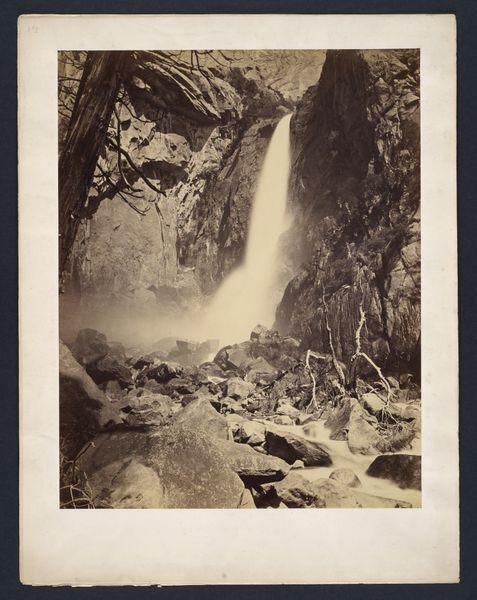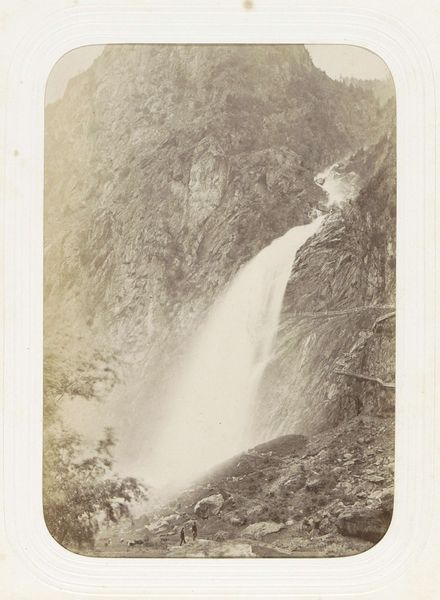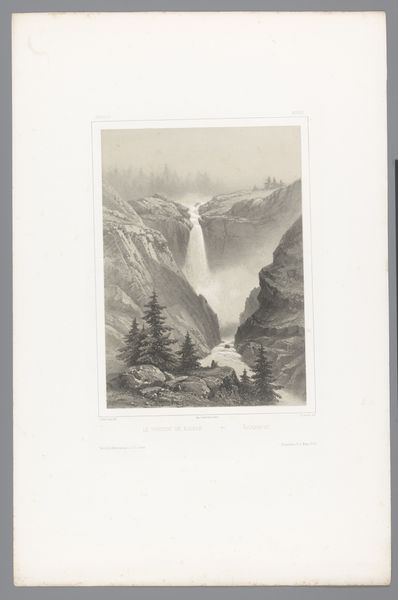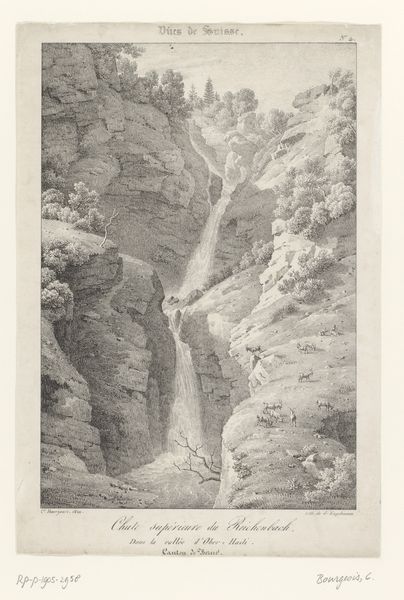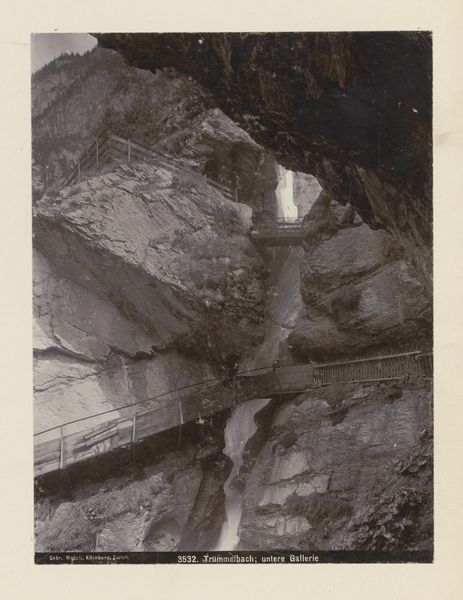
Dimensions: height 383 mm, width 253 mm
Copyright: Rijks Museum: Open Domain
Curator: Eugène Cicéri's 1858 engraving, "Zicht op de waterval van Juzet," presents us with a stunning cascade nestled in the Pyrenees. The cool greyscale palette is so evocative. What is your first impression? Editor: I find myself drawn into the immensity of the landscape, yet a bit disturbed. There's a tension between the romantic allure of nature and its potential for untamed power and even destruction. I feel dwarfed, especially given the couple positioned on the rocks in the lower left. Curator: Exactly. Romanticism always plays with scale. This print is fascinating as it would have taken skill, time, and tools to produce such precise lines. Think of the division of labor: from the draughtsman to the engraver, each specialized task contributing to the final image's circulation, bringing images of sublime landscapes to a broader 19th-century audience who could not otherwise experience them. Editor: And how the print, as a reproducible medium, democratizes access, distributing images that reinforce prevailing social and political ideologies. Who *gets* to experience the sublime and under what conditions is always a critical question. What about those who lived in this area, and how might they view this picturesque image? The "untouched nature" presented, ignores that those who may have traditionally lived here might well be removed by the landowners. This Romantic gaze can overlook material realities. Curator: That’s valid and insightful. And yet, consider the material processes further: the quality of the paper, the ink, the very tools employed to etch these lines, reveal something about the engraver's craftsmanship, about his access to those resources, and who exactly this piece was meant for and marketed toward. It all goes back to production! Editor: I agree! By examining the interplay between process and representation, we gain insight into both the artwork and the society that produced it. The artistic choices like perspective are so embedded in cultural power. The way nature is constructed, it's so intentional in how we tell these stories about place, nature, and progress. Curator: Indeed. Studying art means engaging with that very tension. Thank you for that thought-provoking analysis. Editor: My pleasure, an important discussion to keep in mind.
Comments
No comments
Be the first to comment and join the conversation on the ultimate creative platform.
